|
|
|
|
|
Western Locomotive Supply
|
|
Building whistles has become very popular in the the
past years, but building them the old fashion way is almost non
existent. What do you mean by old fashion way, you may ask? I mean
building patterns out of wood, making core boxes, heating brass to a
molten state and pouring into the mold. The process is expensive and
most find it's not worth it but Jeff Hosford has taken on the
challenge under the assumed name of Western Locomotive Supply.
Fitting because he's building locomotive sized whistles (6"
Diameter). Jeff has been working with metal since he was a kid, and
is fantasized with casting metal. |
|
|
" I've always enjoyed manipulating metal. I
remember, when I was eight or nine, fashioning a three shank ripper
for my Tonka dozer out of some nails. In high school I took metal
shop, advanced metal shop, teachers aid for metal shop; anything to
spend time in there! And my favorite aspect was always the foundry.
To me it just seemed like magic to be able to melt raw ingots down
and turn them into something cool or useful."
"At age nineteen, I hired out with the local shortline railroad as a
carman where I learned to weld and fabricate heavy steel parts for
freight car repair." |
|
|
When building a whistle you have to have some idea
on how a steam whistle works, and what notes of a chord you want
your whistle to play which is imperative to a great sounding
whistle. There are math mathematical equations at work when building
a whistle to figure these variables precisely. Jeff has already
designed a "medium" six chime with his idea of the perfect chord.
Medium is just a term we're using for the size Jeff has chosen which
is between a Southern Pacific Six Chime and the Nathan's Six design. |
|
Since the design and idea is first the second step
naturally is to make patterns for whistle building it is common to
use wood. Each pattern must be carved meticulously because
your whistle will look like your carving in the end. No one said it
was easy - whistle building is a complicated multi step process.
The process is complicated, but the
Idea is not. Jeff is taking Maple in strips, and laminating them to
the desired thickness, laying the grain in different direction -
insuring proper machining without warping. "I tried
using poplar on the advice of a friend but when a bit of sweat
dripped on it the grain opened up like a flower. The Maple carves
like wax without chipping." |

The wood to be machined. |

The finished Product |
 |
|
|
More Photos...to be Continued.
  |
 |
 |
 |
|
|
|
|
|
 |

|
|
I've always enjoyed manipulating metal. I remember,
when I was eight or
nine, fashioning a three shank ripper for my Tonka dozer out of some
nails. In high school I took metal shop, advanced metal shop,
teachers
aid for metal shop; anything to spend time in there! And my favorite
aspect was always the foundry. To me it just seemed like magic to be
able to melt raw ingots down and turn them into something cool or
useful.
At age nineteen, I hired out with the local shortline railroad as a
carman where I learned to weld and fabricate heavy steel parts for
freight car repair. The company also had a contract with the state
of
Nevada to do all of the restoration, maintenance and operation at
the
Nevada State Railraod Museum and so about a year into my career with
them, being a skinny kid that could get into small places, they sent
me
there as an apprentice boiler maker where I further honed my welding
and
machining skills and learned how to fabricate really heavy parts.
As part of my duties there I learned hoe to fire and run steam
locomotives and it was during this time that I took an interest in
steam
whistles and experimenting with different sounds.
Things change and I moved on and have been an locomotive engineer with
the Union Pacific for the last eighteen years but I'm still
playing
with metal. In my free time I've been restoring antique tractors and
windmills and fabricating parts for many things. I was restoring a
Wurlitzer theater organ but that was wiped out in the Northridge
earthquake.
I never lost my interest in steam whistles though and had built up
quite a large collection of them. However, a few years ago, the
price
for antique whistles escalated so high that I just couldn't justify
keeping them and I sold most of my collection. People kept asking
why
someone doesn't just make new ones and the answer is that the cost
of
having someone make patterns, getting castings made and having them
machined would far exceed even the inflated prices being paid for
them.
This idea kept gnawing at me and finally I made a challenge to myself
to see if I could put my foundry interest and metal working skills
to work
and produce some steam whistles just like the original ones, not
only
just to see if I could do it, but to try to make something available
to
other enthusiasts at a reasonable price.
I hate working with wood and do so only out of necessity but after two
years and two attempts, I am finally on the verge of having a nice
high
quality step-top 6-chime whistle and it looks like I'll be able to
offer
them for sale at about half the going price of an original. I
haven't
tried to copy any particular railroad's whistles exactly but I've
taken
the features I like from many whistles and tried to incorporate them
into a whistle that is very authentically "railroad" in nature. I
really
enjoy making things the way they used to be made, i.e., using hot
driven rivets where a weld would do, and I think it's paying off. I
should have whistles for sale soon and I'm excited to see what
others think.
|
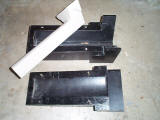 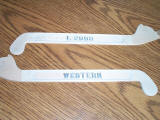 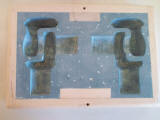 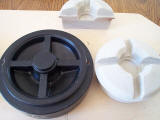
  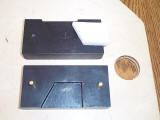 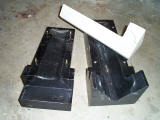 |
|
   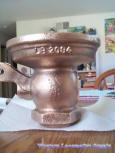 
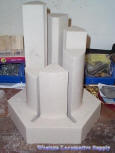 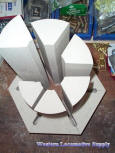
   
|
|
|
|
|
|
|
|
|
|
|
© Copyright 2005-2007 |
 |
|